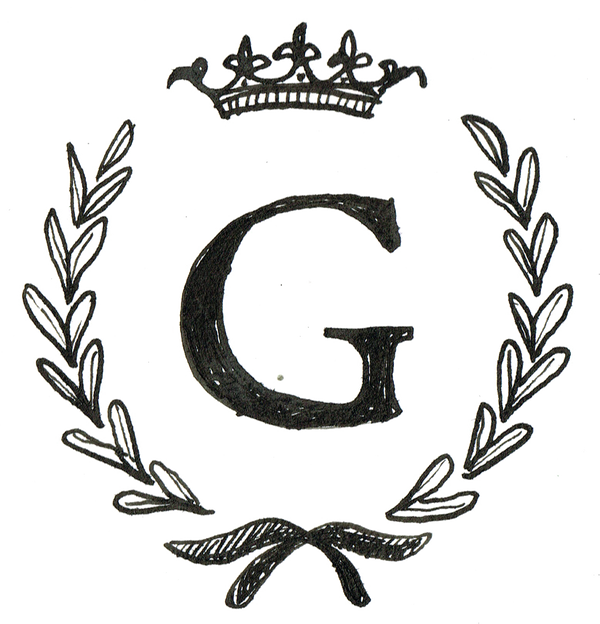The State of Transformation by l'Atelier d'Image Transformée
•Posted on February 05 2021

Dear Readers,
This week on Shop The Château we are delighted to share with you a blog post written by David of L'Atelier d'Image Transformée.
David writes and shares with us two reasons as to why his beautiful shop is named so. One short and more practical answer and another longer and metaphorical about the journey of life.
His love affair with France will resonate with many. But perhaps, his longer life journey will resonate with more. Change is often a challenge for many of us. But, David's seamless and serendipitous journey gives us hope that through the seasons of life sometimes transformation may be warmly and welcomely embraced.
Thank you, David, for sharing your story and for being part of the Shop The Château Marketplace.
We are wishing you happy reading and a bon weekend,
The Château Team x
---
"I can provide two answers to the question of why my "shop" is called " l'Atelier d'Image Transformée." One short and one longer.
The short and simple answer is that my drawings are not always completed works in themselves but are "transformed" through various means to become prints, parts of collages, or decals that decorate ceramic tiles and other wares.

The longer answer, where the heart and soul of my work truly lies, began with my early infatuation with France and all things French...
To travel back in time, I, perhaps, was in the third grade when I was given the name of a French child with whom I was to correspond as a "penpal." I still remember the excitement of learning new words and phrases and trying to incorporate them into my letters. Suddenly, the French words in my music book meant more than a jumble of vowels and consonants - I understood that those people of Avignon were dancing on a bridge!
During college, I continued to study French and read 18th and 19th Century plays in their original language and, of course, met and admired "le Petit Prince!" I encountered Proust and his magical world and determined that I would never abandon it. It was from this immersion in French culture that I encountered the Château de Gudanes on Facebook and resonated completely with the romance of this venture.
However, my career ambitions instead drew me elsewhere in the direction of the practice of Architecture. I received a Master of Architecture degree from Carnegie-Mellon and spent years working in firms and finally my own practice. But, it was during a project which involved the specifying of some extremely expensive hand painted Delft tiles, that it occurred to me to attempt to replicate those designs in a more cost effective way.

Being from East Liverpool, Ohio, a pottery center founded by 19th Century Staffordshire potters, it was a natural step to "transform" my drawings into decals which could then be fired to ceramic wares.

I was, and still am, inspired by the Aesthetic Movement, plants, and botanical study, and my first tile designs were reflective of these interests.


However, the decal making process imposed several arbitrary constraints to my drawings: size of scanning limitation, sizes of reproduction, and the minimum requirements of production runs. It was at that point that I sought the freedom of alternative means of expression...
Having years of experience drawing with pen and ink, I continued in this medium, however, now released from scale restrictions, began projects with a newfound freedom. Such drawings form the library of my limited edition prints available on Shop The Château, such as the larger scale "Conservatory" 20" by 30" and "Hanging Fuchsias".

These printed images allowed me to explore further transformations in my own life and heart and from these studies my collages evolved. I manipulate the printed images in many ways: excising backgrounds with an Xacto knife, hand tinting, reassembling, etc. It was concurrent with this period that I discovered the beauties of Japanese Washi and Nepali Lokta papers, which greatly increased my vocabulary of expression.


My point, and to return to my beginning question, I have now realized that, despite the continuity of certain themes and elements, my work will always be in that state of "Transformation". Just like I am myself and as we all are."
Thank you dearly for reading,
David
More Posts
-
Sharing Light By Mo...
Let me first introduce myself, my name is Monica Burke. I am a welder and metal designer with a background in historic preservation and home restor...
Read More -
Chateau Gudanes: A ...
"It is only with the heart that one can see rightly; what is essential is invisible to the eye.” Antoine de Saint-Exupéry, The Little Prince Have y...
Read More -
Soaps, Ceramics & T...
It was at the beginning of 2019 that our now dear friend, Debby from Peaceful Haven Farms, sent us a hopeful email asking about staying at the Châ...
Read More



